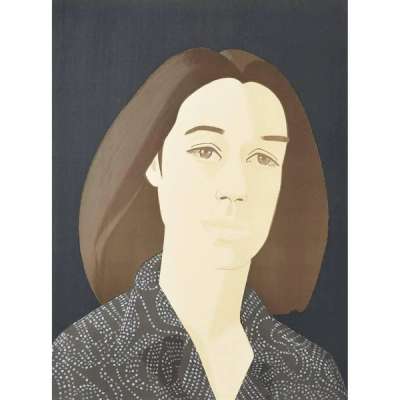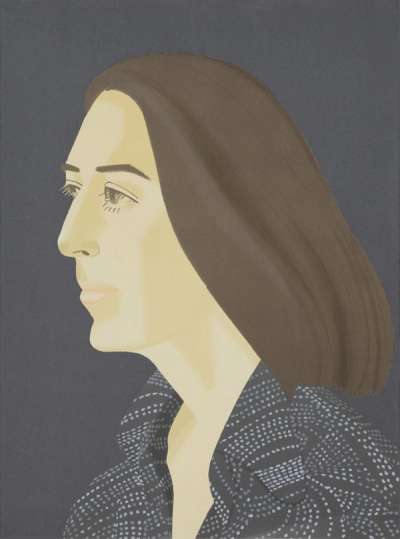Ada
Four Times
Alex Katz's Ada Four Times print series, made between 1979-80 captures the artist's muse and wife, Ada, in a sequence of portraits that exemplify Katz's mastery of form, colour, and the dynamics of perception. The series presents a compelling exploration of Ada's personality through variations in composition, lighting, and mood, reflecting Katz's ongoing fascination with the subtleties of visual representation and the nuances of human expression.
Alex Katz Ada Four Times For sale
Ada Four Times Value (5 Years)
With £4384 in the past 12 months, Alex Katz's Ada Four Times series is one of the most actively traded in the market. Prices have varied significantly – from £449 to £8709 – driven by fluctuations in factors like condition, provenance, and market timing. Over the past 12 months, the average selling price was £2192, with an average annual growth rate of 0.4% across the series.
Ada Four Times Market value
Auction Results
| Artwork | Auction Date | Auction House | Return to Seller | Hammer Price | Buyer Paid |
|---|---|---|---|---|---|
 Ada Four Times 3 Alex Katz Signed Print | 6 Aug 2025 | Wright | £1,658 | £1,950 | £2,650 |
 Ada Four Times 1 Alex Katz Signed Print | 3 Apr 2025 | Wright | £1,785 | £2,100 | £2,900 |
 Ada Four Times 2 Alex Katz Signed Print | 3 May 2022 | Wright | £1,700 | £2,000 | £2,650 |
 Ada Four Times 4 Alex Katz Signed Print | 2 Oct 2020 | Leslie Hindman Auctioneers, Chicago | £1,955 | £2,300 | £2,900 |
Sell Your Art
with Us
with Us
Join Our Network of Collectors. Buy, Sell and Track Demand
Meaning & Analysis
Alex Katz's Ada Four Times series stands as a testament to his enduring interest in the motif of personal and intimate observation, rendered with his characteristic economy of line and colour. Katz's depiction of Ada, his lifelong muse and wife, across four distinct canvases, offers a nuanced study of the subject's presence and the artist's perception, encapsulating a moment in time from multiple perspectives.
The series unfolds a visual narrative that is both consistent and variable, with each portrait capturing a different aspect of Ada's essence. Katz's adept use of flat colour planes and crisp outlines distils his subject's form to its essence, while the subtle variations between the portraits suggest movement, mood, and the passage of time. This approach not only highlights Katz's skill in balancing abstraction with figuration but also his ability to convey deep emotional resonance through minimalistic means.
Ada Four Times 1 through Ada Four Times 4 collectively demonstrate Katz's fascination with the dynamics of looking and being seen. By presenting Ada in a series of repeated yet individually distinct portraits, Katz invites viewers to engage in a deeper contemplation of the subject, encouraging a meditation on the nature of identity, perception, and the role of the muse in art. The series reflects a dialogue between artist and subject that is both intimate and universal, showcasing Katz's unique contribution to the discourse of portraiture.
Furthermore, the Ada Four Times series is notable for its exploration of the interplay between repetition and difference. Katz's methodical approach to revisiting the same subject in varying contexts underscores his interest in the fluid boundaries of representation and the ways in which visual elements can be reconfigured to produce new meanings. This exploration is emblematic of Katz's broader oeuvre, which consistently seeks to push the boundaries of contemporary portraiture.



